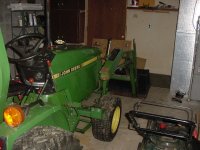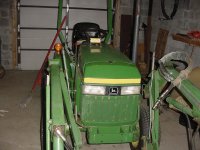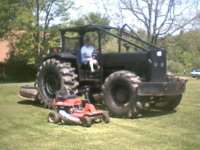RoyJackson
Rest in Peace
- Joined
- Nov 17, 2001
- Messages
- 24,646
- Location
- Bethel, Vermont
- Tractor
- John Deere 4052R Cab,, Deere 855D UTV, Z920A Zero Turn Mower and assorted implements
I would delete your item #3.
In just about every practical application there is too much to do, look at, feel, watch out for - adding a goofy gauge adds a distraction - it will NOT be calibrated to your rig - a root, rock or pot hole will invalidate its reading in an instant.
A dangerous distraction at best.
Actually, tiltmeters are quite handy and well worthwhile...especially for the novice tractor operator or when working on unfamiliar turf.
It's not a gage you continuously watch (you don't continuously watch your temp gage or fuel level gage either). It's not for those abrupt changes (upslope rock, downslope rut) but work well for any slope or if the slope gradually increases in steepness.
Easy to calibrate, but you'll need a level and preferably do this on a concrete surface (well, not dirt or gravel). Once leveled, there is not reason to re-level it unless you know it's been moved somehow.
Attached pic is my tiltmeter on my old 670.


